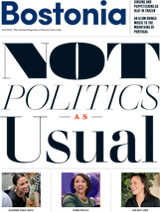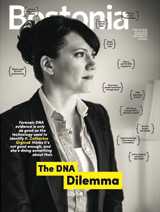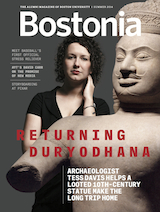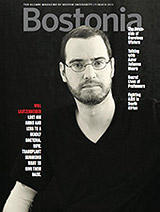With disadvantaged people of various stripes propelling the candidacies of Donald Trump and Bernie Sanders this year, is there any doubt that the country’s have-nots have been screwed by inequality? The numbers seem to corroborate the tough-and-getting-tougher narrative: average real income up by 38 percent since 1989 for the top 5 percent of US households, while growing just 10 percent for the bottom 95 percent; the less wealthy half of Americans own a piddling 1 percent of the country’s total net wealth.
The numbers don’t lie—but they do overstate the problem, says economist Laurence Kotlikoff, a William Fairfield Warren Distinguished Professor and a College of Arts & Sciences professor of economics.
In a recent paper posted by the National Bureau of Economic Research, he and coauthors Alan Auerbach of UC Berkeley and Darryl Koehler of Economic Security Planning say that for all their importance, inequality studies producing those numbers “fail an important test: none measures inequality in living standards, which should be the ultimate concern when assessing economic fairness.” If you look at the effects of government fiscal policy—taxes that people pay, especially the rich, and transfer payments (such as public assistance, Social Security, and Medicare) they receive, especially the needy—those have a dramatic effect on lessening inequality in a key area: expected future lifetime spending by households, Kotlikoff argues.
“The distribution of remaining lifetime spending, while still highly unequal, is considerably more equal then either net wealth or current income,” the study says. “For example, the top 1 percent of 40- to 49-year-olds ranked by resources account for 18.9 percent of total cohort net wealth and 13.4 percent of total cohort current income, but only 9.2 percent of…remaining lifetime spending.” The fifth of the population in that age group with the fewest resources has only 2 percent of net wealth and less than 5 percent of income—but it accounts for 7 percent of total spending, the study says.
Kotlikoff has a financial planning software company, Economic Security Planning, whose products BU employees can receive for free. He spoke with Bostonia about his study, which informs more than just his scholarship: he recently announced his write-in candidacy in this fall’s presidential election.
Bostonia: How did you calculate expected future lifetime spending?
Kotlikoff: We infer that from two things. One is a survey from the Federal Reserve, the Survey of Consumer Finances, where they asked households about their wealth, their labor income, their 401(k)s. And then we infer what their future earnings are going to be based on another database, the Current Population Survey (CPS), the Census Bureau’s measure of the US labor force, earnings, and education. So we look at trends in how wages grow over the life cycle. In the Survey of Consumer Finances, we start with about 6,500 households, including poor and super-rich people. The CPS is a bigger survey.
Then we have the software I developed that we augmented to do the study. It gives you a life cycle plan for how much you spend every year so that you don’t run out.
Why is lifetime spending a better gauge of living standards?
Ultimately, what we’re trying to do is compare people’s happiness, their well-being. If I told you that everything that you are going to experience in the future is going to be very bleak—that you’re going to get to consume nothing, no clothes, no house, no car, starting an hour from now—you’re going to be very, very, very unhappy. To say that we should gauge your happiness just by your consumption right this instant, as opposed to taking all your future into account—that’s just myopic.
How confident are you in your guesses about the future?
We’re assuming that the current fiscal provisions will last—the whole IRS code, state income taxes, food stamps, Medicaid. The current fiscal system is not a guess; you know what it is. To start things off, you need to have some assumptions. Along any life path that you experience, you’re going to end up spending every penny that you have in resources. And that may be in the form of bequests.
What can we expect lifetime spending to be for this household, on average, and how does that compare with this other household? Some people might be living hand-to-mouth now because they’ve got a lot of expenses, like kids at home or in college, or they’ve got a big mortgage. But the program knows that at some point they’re going to be out from under that and spend more on themselves.
What if they’re hand-to-mouth now because they’re, say, low-skilled, without prospects for improving their income?
If they’re going to be poor for the rest of their life, the program is imputing their earnings to be similar to what they are now.
We’re trying to match up statistically people that have certain characteristics: sex, age, race. We have their current earnings; we go to the CPS and look at the wage growth of people with those characteristics. We apply that growth rate to the data. I think it’s the best that can be done, given that the future is uncertain.
A lot of people in your profession have said that economic mobility has eroded in this country, that people are not graduating to higher economic classes.
The CPS data we’re using for imputing wages goes back to 1968, so we’re talking about 45 years of data. The fact that wages haven’t grown in real terms is imbedded in those data. So when we project forward, we’re taking into account this slow growth in wages.
This paper doesn’t have a list of policy prescriptions?
No. We’re happy to analyze them. We’re in the process of doing them, and we will be getting a handle on what you can do to raise work incentives and lower marginal tax rates, but still maintain progressivity. I think we’re going to analyze replacing the income tax as well as replacing the payroll tax with a consumption tax, which taxes spending, but exempts savings and investment.













































Related Stories
How to Get What Government Owes You
Economics prof’s new guide to getting the most from Social Security
BU Economist Faults Trump for Steel, Aluminum Tariffs
“All the industries that use steel are going to lose”
Noted Scholar of Inequality to Lead BU School of Law
Angela Onwuachi-Willig drawn by BU’s history of access and diversity
Post Your Comment